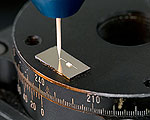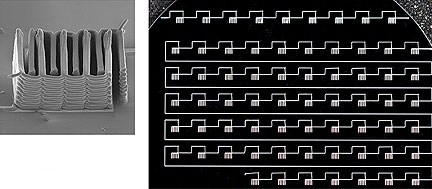3D Printed Batteries
 Dec-01-13
A method of creating batteries with a 3D printer could open the door to a whole new generation of devices, as well as more efficient manufacturing of existing products.
Dec-01-13
A method of creating batteries with a 3D printer could open the door to a whole new generation of devices, as well as more efficient manufacturing of existing products.The technology, developed by Jennifer Lewis of Harvard University, involves using an ink consisting of nanoparticles of lithium titanium oxide, deionized water and ethylene glycol. The mixture is spun for 24 hours, and then placed inside a custom-made syringe that is inserted into a high-pressure dispenser that has been added to a conventional 3D printer. The ink is solid, but will flow when subjected to high-pressure, and then will revert to its solid state after exiting the syringe.
The technology will work at room temperature, allowing the battery 'ink' to be printed on plastic or other materials that can be damaged by high temperatures. The tiny batteries can also function as well as commercial batteries, because the process allows the batteries to be printed with 100-nanometer accuracy, creating structures that mimic those of much larger batteries.


Add Your Comment